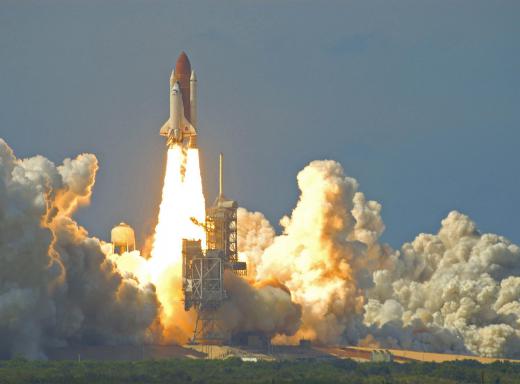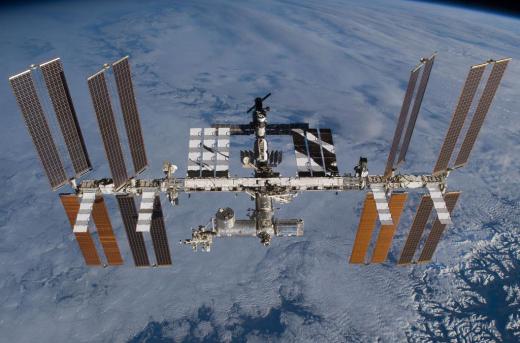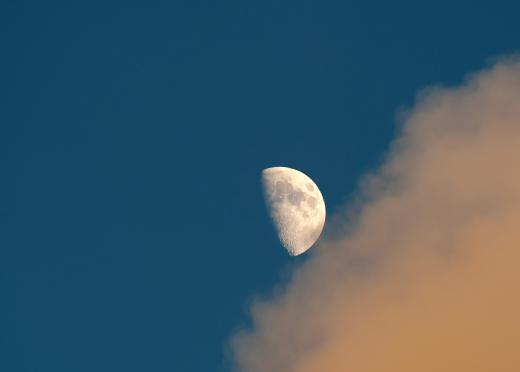What will Replace the Space Shuttle?
The destruction of the space shuttle Columbia in 2003 prompted the National Aeronautics and Space Administration (NASA) to look for alternative methods of space travel. The vehicle that is slated to replace the space shuttle is the Constellation Orion produced by Lockheed Martin. The Orion appears very similar to the Apollo spacecraft of the 1960s, although it is larger and much more advanced. Orion will hold a four man crew whose primary goal is research. Unlike previous lunar missions, all four crew members will leave the craft in orbit to travel to the surface of the moon.
Orion has sometimes been called "Apollo on steroids" because of its similar appearance to the original lunar craft. In many basic ways, it is much more similar to Apollo than the current space shuttle. Orion is shaped like a cone and features a capsule that will parachute to safety upon its return to Earth, rather than the space shuttle's airplane like landing.

The plans for Orion have it measuring 16.5 feet (5 meters) in diameter and 10.8 feet (3.3 meters) in height. It will weigh in at about about 31,000 pounds (14,000 kg) when empty. The estimated habitable volume is 692 cubic feet (11 cubic meters). This makes it larger than Apollo, but smaller than the space shuttle.
Orion will have a single engine Service Module that houses storage bays. The basic functions will be run by batteries and electricity generating fuel cells. These electric functions will be enhanced with solar arrays that will keep power going at a minimum level during the unmanned lunar orbit.

The launch must be carefully timed in order for a lunar landing to be successful. First, Orion will launch from the Kennedy Space Station using an Ares I launch vehicle. An hour and a half after its launch, a Res V rocket will launch the Altair lunar landing spacecraft and an Earth Departure Stage into Earth orbit to meet Orion. They will join and orbit the Earth for up to four days while waiting for the moon to be in the correct position.

When the Trans-Lunar Injection Window is open, meaning that the moon is aligned properly with the vehicle, the Earth Departure Stage will blast the joined spacecraft towards the moon. The Earth Departure stage will then fall away and the Altai Lunar Lander rockets the remaining craft into orbit around the moon. The crew will use the Lunar Lander to land safely on the surface of the moon while the rest of the spacecraft remains in orbit awaiting their return.
The initial Constellation Orion mission will be trip to the International Space Station. This first test of the system will help to pinpoint any problems that could be detrimental to a moon landing. The goal for the first moon trip is a seven day stay on the surface. Scientists plan to stretch this to 180 days within a decade of Orion's first mission, with the eventual goal a lunar station. Rumors have circulated that an eventual Mars landing will begin with a lunar launch, so the Orion missions will presumably be testing the waters for this possibility.
AS FEATURED ON:
AS FEATURED ON:













Discussion Comments
Actually if you read around, the Constellation Project has been scuttled for review in 2015. In the 2010/2011 US Federal Budget, there were no funds allocated for the project - mainly because there seemed to be very little in terms of gains made and the project process lacked innovation across the entire board.
What I "do" know, is that the Orion capsules (that were already under construction), will be kept and integrated into some new design, but only to be used as emergency launch failure escape vehicles. I agree entirely with Obama and his administration (as does Buzz Aldrin), about the future of space travel needing more than a haircut and a shower to get it through.
One successful candidate for the ISS crew transportation vehicle provisional account is Sierra Nevada's Dream Chaser (a bit like a mini shuttle, and more or less a ferry to the international space station). Furthermore, Constellations whole concept was based on a return to specific utility.
The Space Shuttle program was so expensive due to the vehicle being so versatile, so Constellation was drafted to do the same work at a tenth of the cost, but I think they went too stingy on the design process, if you ask me.
Why are people so interested in traveling to space? It seems sort of a novelty, but it doesn't seem to have any good solid purpose. The benefits do not seem to outweigh the risks. Even if we were to proceed past the moon, the time and money it would take to venture farther could ruin us. I think we already have enough issues on this planet as is.
My opinion is that we will one day have a connection to the moon. Like the tower of Babel of ancient times, we will build structures to reach to the heavens, and people will be able to regularly ship back and forth to discover the moon. We may even have a city established up there, with new life.
Post your comments